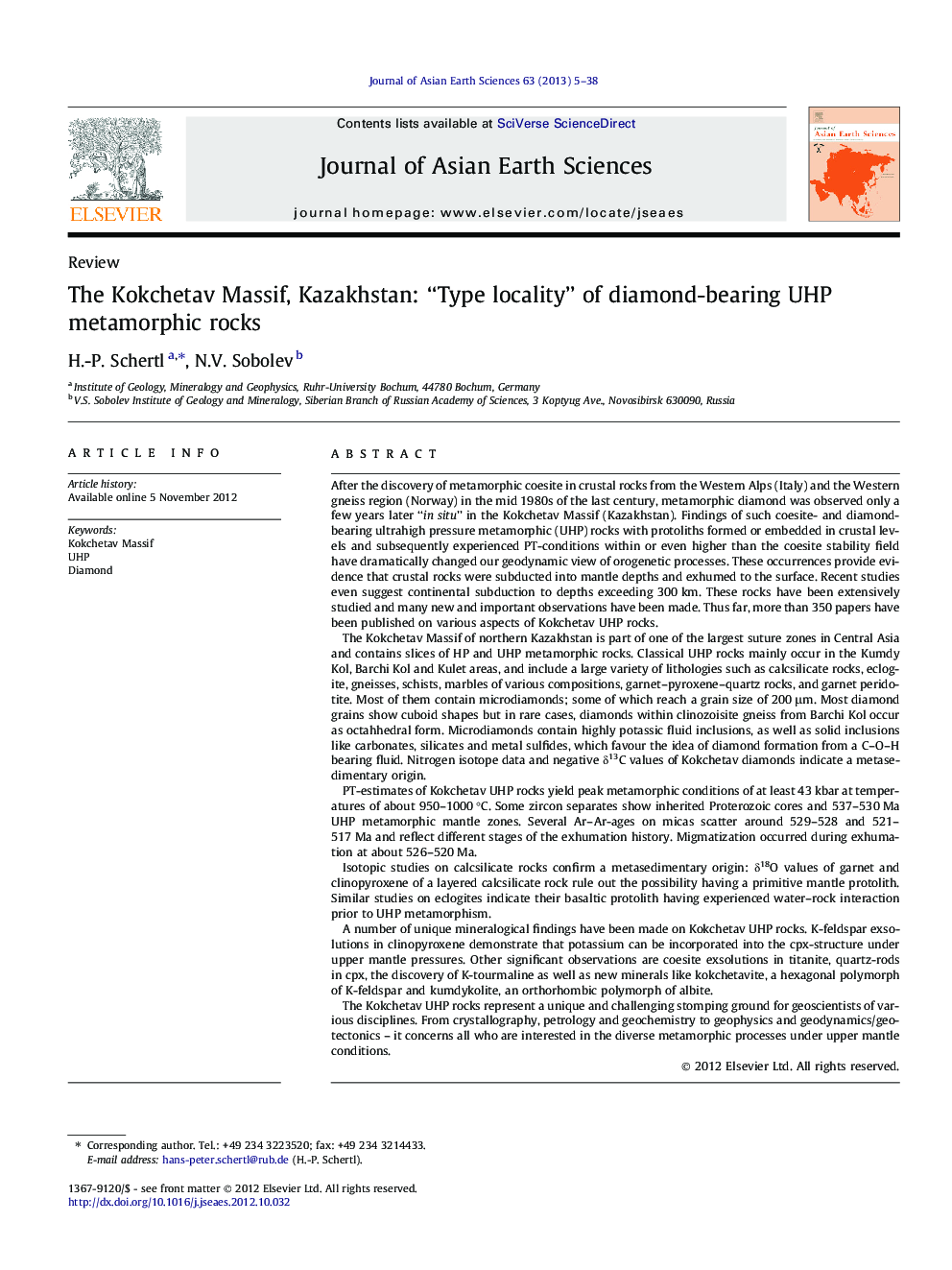| کد مقاله | کد نشریه | سال انتشار | مقاله انگلیسی | نسخه تمام متن |
|---|---|---|---|---|
| 4731209 | 1640402 | 2013 | 34 صفحه PDF | دانلود رایگان |

After the discovery of metamorphic coesite in crustal rocks from the Western Alps (Italy) and the Western gneiss region (Norway) in the mid 1980s of the last century, metamorphic diamond was observed only a few years later “in situ” in the Kokchetav Massif (Kazakhstan). Findings of such coesite- and diamond-bearing ultrahigh pressure metamorphic (UHP) rocks with protoliths formed or embedded in crustal levels and subsequently experienced PT-conditions within or even higher than the coesite stability field have dramatically changed our geodynamic view of orogenetic processes. These occurrences provide evidence that crustal rocks were subducted into mantle depths and exhumed to the surface. Recent studies even suggest continental subduction to depths exceeding 300 km. These rocks have been extensively studied and many new and important observations have been made. Thus far, more than 350 papers have been published on various aspects of Kokchetav UHP rocks.The Kokchetav Massif of northern Kazakhstan is part of one of the largest suture zones in Central Asia and contains slices of HP and UHP metamorphic rocks. Classical UHP rocks mainly occur in the Kumdy Kol, Barchi Kol and Kulet areas, and include a large variety of lithologies such as calcsilicate rocks, eclogite, gneisses, schists, marbles of various compositions, garnet–pyroxene–quartz rocks, and garnet peridotite. Most of them contain microdiamonds; some of which reach a grain size of 200 μm. Most diamond grains show cuboid shapes but in rare cases, diamonds within clinozoisite gneiss from Barchi Kol occur as octahhedral form. Microdiamonds contain highly potassic fluid inclusions, as well as solid inclusions like carbonates, silicates and metal sulfides, which favour the idea of diamond formation from a C–O–H bearing fluid. Nitrogen isotope data and negative δ13C values of Kokchetav diamonds indicate a metasedimentary origin.PT-estimates of Kokchetav UHP rocks yield peak metamorphic conditions of at least 43 kbar at temperatures of about 950–1000 °C. Some zircon separates show inherited Proterozoic cores and 537–530 Ma UHP metamorphic mantle zones. Several Ar–Ar-ages on micas scatter around 529–528 and 521–517 Ma and reflect different stages of the exhumation history. Migmatization occurred during exhumation at about 526–520 Ma.Isotopic studies on calcsilicate rocks confirm a metasedimentary origin: δ18O values of garnet and clinopyroxene of a layered calcsilicate rock rule out the possibility having a primitive mantle protolith. Similar studies on eclogites indicate their basaltic protolith having experienced water–rock interaction prior to UHP metamorphism.A number of unique mineralogical findings have been made on Kokchetav UHP rocks. K-feldspar exsolutions in clinopyroxene demonstrate that potassium can be incorporated into the cpx-structure under upper mantle pressures. Other significant observations are coesite exsolutions in titanite, quartz-rods in cpx, the discovery of K-tourmaline as well as new minerals like kokchetavite, a hexagonal polymorph of K-feldspar and kumdykolite, an orthorhombic polymorph of albite.The Kokchetav UHP rocks represent a unique and challenging stomping ground for geoscientists of various disciplines. From crystallography, petrology and geochemistry to geophysics and geodynamics/geotectonics – it concerns all who are interested in the diverse metamorphic processes under upper mantle conditions.
Journal: Journal of Asian Earth Sciences - Volume 63, 15 February 2013, Pages 5–38